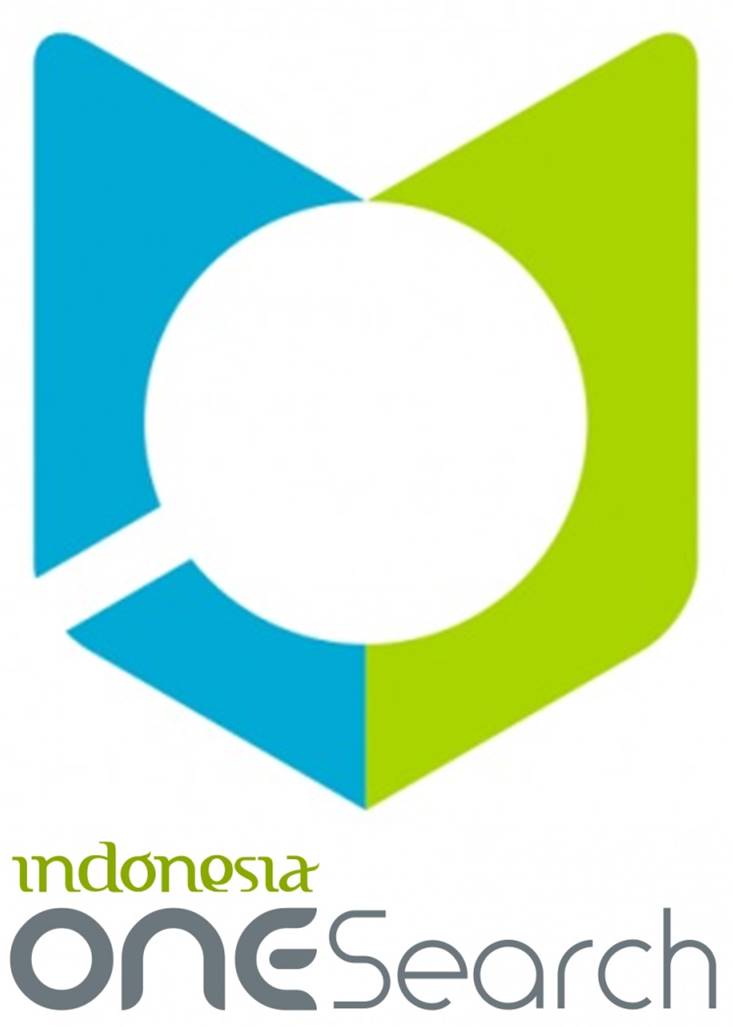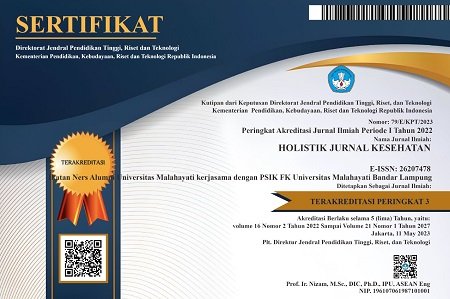OPTIMALISASI PELAKSANAAN TIMBANG TERIMA DALAM METODE ASUHAN KEPERAWATAN DENGAN MODEL TIM: PILOT STUDY
Abstract
Professional nursing services demanded professionalism of nurses in providing nursing care in improving quality of care. The purpose of optimization implementation team models the assignment method is to set up the necessary efforts to improve kuwalitas in performing nursing care. The design was a pilot study involving 14 respondents. How sampling with purposive sampling by select qualified nurse with the head of the room and the team leader and four wards for the implementation of standard operating procedures. Troubleshooting in RS X by using the cycle plan do check and action (PDCA), through a program with a handy guide a team method, SPO weigh receive using S-BAR communication and integrated patient progress notes, socializing, discussion and role play.
Results: Increased understanding of head room and team leaders on the implementation of the methods of nursing care team models look of a mean value of 66.04 before the event and after the intervention to 85.8. In the implementation handover between shift tendency implementation is in accordance with the steps in the SPO, caused by obstacles in the implementation of the management of time in implementation and change the handover between shift in wards receive care. Decumentation implementation of integrated patient progress notes have not been optimal at the time of writing assessment and planning to be done, it is because of the lack of uniformity and guidance in the writing of SOAP.
Recommendation: Created a policy by the director to set the guide books that have been designed. The field of nursing along with its head room should exercise direction and control functions in the implementation of handover between shifts in the wards and conduct intensive guidance and control in the writing of patient progress notes by focusing on writing SOAP, so the implementation will run optimally.
Pelayanan keperawatan profesional menuntut adanya profesionalisme perawat dalam memberikan asuhan keperawatan dalam peningkatan mutu pelayanan.Tujuan optimalisasi pelaksanaan metode penugasan model tim yaitu untuk menyiapkan perangkat yang dibutuhkan sebagai upaya untuk meningkatkan kuwalitas dalam melaksanakan asuhan keperawatan. Desain yang digunakan adalah pilot study dengan melibatkan 14 responden Cara pengambilan sampel dengan purposive sampling dengan memilih perawat dengan kualifikasi kepala ruangan dan ketua tim serta 4 ruang rawat untuk pengimplementasian standar prosedur operasional. Pemecahan masalah di RS X dengan menggunakan siklus plan do check and action (PDCA), melalui program pembuatan buku panduan metode tim, SPO timbang terima menggunakan komunikasi S-BAR dan catatan perkembangan pasien terintegrasi, sosialisasi, diskusi serta role play.
Hasil: Meningkatnya pemahaman kepala ruangan dan ketua tim mengenai pelaksanaan metode asuhan keperawatan model tim terlihat dari nilai rerata sebelum kegiatan 66,04 dan setelah kegiatan menjadi 85,8. Dalam pelaksanaan timbang terima antar shift kecenderungan pelaksanaan sudah sesuai dengan langkah-langkah dalam SPO, hambatan dalam pelaksanaan disebabkan oleh manejemen waktu dalam pelaksanaan serta mengubah pola timbang terima antar shift diruang rawat. Pelaksanaan pendokumentasia catatan perkembangan pasien terintegrasi belum optimal pada saat menulis assesment dan planning yang akan dikerjakan, hal tersebut karena belum adanya keseragaman dan panduan dalam penulisan SOAP.
Rekomendasi: Dibuat suatu kebijakan oleh direktur untuk penetapkan buku panduan yang telah dirancang. Bidang keperawatan beserta kepala ruangan hendaknya menjalankan fungsi pengarahan dan pengawasan dalam pelaksanaan timbang terima antar shift di ruang rawat serta melakukan bimbingan dan pengontrolan secara intensif dalam penulisan catatan perkembangan pasien dengan menitik beratkan pada penulisan SOAP, sehingga pelaksanaan akan berjalan dengan optimal.
Keywords
Full Text:
PDFReferences
Apker, J., Propp, K. M., Zabava Ford, W. S., &Hofmeister, N. (2006). Collaboration,Credibility, Compassion, and Coordination:Professional Nurse Communication Skill Setsin Health Care Team Interactions. Journal of Professional Nursing, 22(3), 180–189.http://doi.org/10.1016/j.profnurs.2006.03.002
Barbosa, C.M.,Mauro,M. F. Z., Cristóvão, S. A. B.,& Mangione, J. A. (2011). The importance ofstandard operating procedures (SOPs) forclinical research centers. Revista DaAssociacao Medica Brasileira, 57(2), 134–135. http://doi.org/10.1016/S2255-4823(11)70032-7
Bridges, R., Sherwood, G., & Durham, C. (2014).Measuring the influence of a mutual supporteducational intervention within a nursingteam. International Journal of NursingSciences, 1(1), 15–22.http://doi.org/10.1016/j.ijnss.2014.02.013
Brunetto, Y., Shriberg, A., Farr-Wharton, R.,Shacklock, K., Newman, S., & Dienger, J.(2013). The importance of supervisor-nurserelationships, teamwork, wellbeing, affectivecommitment and retention of North Americannurses. Journal of Nursing Management,21(6), 827–837.http://doi.org/10.1111/jonm.12111
Duffield, C. M., Roche, M. A., Blay, N., & Stasa, H.(2011). Nursing unit managers, staff retentionand the work environment. Journal of ClinicalNursing, 20(1–2), 23–33.http://doi.org/10.1111/j.1365-2702.2010.03478.x
Ferguson, L., & Cioffi, J. (2011). Team nursing:Experiences of nurse managers in acute caresettings. Australian Journal of AdvancedNursing, 28(4), 5–11.
Gagnon, M. P., Payne-Gagnon, J., Fortin, J. P.,Paré, G., Côté, J., & Courcy, F. (2015). Alearning organization in the service ofknowledge management among nurses: Acase study. International Journal ofInformation Management, 35(5), 636–642.http://doi.org/10.1016/j.ijinfomgt.2015.05.001
Jefferies, D., Johnson, M., & Nicholls, D. (2011).Nursing documentation: How meaning isobscured by fragmentary language. NursingOutlook, 59(6), e6–e12.http://doi.org/10.1016/j.outlook.2011.04.002
Jefferies, D., Johnson, M., Nicholls, D., & Lad, S.(2012). A ward-based writing coach programto improve the quality of nursingdocumentation. Nurse Education Today,32(6), 647–651.http://doi.org/10.1016/j.nedt.2011.08.017
Kalisch, B. J., Lee, H., & Rochman, M. (2010).Nursing staff teamwork and job satisfaction.Journal of Nursing Management, 18(8), 938–947. http://doi.org/10.1111/j.1365-2834.2010.01153.x
Kalisch, B. J., & Lee, K. H. (2010). The impact ofteamwork on missed nursing care. NursingOutlook, 58(5), 233–241.http://doi.org/10.1016/j.outlook.2010.06.004
Ni, C., Hua, Y., Shao, P.,Wallen,G. R., Xu, S., & Li,L. (2014). Continuing education amongChinese nurses: A general hospital-basedstudy. Nurse Education Today, 34(4), 592–597. http://doi.org/10.1016/j.nedt.2013.07.013
Ninaus, K., Diehl, S., Terlutter, R., Chan, K., Huang,A., & Erlandsson, S. (2015). Benefits andstressors - Perceived effects of ICT use onemployee health and work stress: Anexploratory study from Austria and HongKong. International Journal of QualitativeStudies on Health and Well-Being, 10.http://doi.org/10.3402/qhw.v10.28838
Rogers, M. L., Sockolow, P. S., Bowles, K. H.,Hand, K. E., & George, J. (2013). Use of ahuman factors approach to uncoverinformatics needs of nurses in documentationof care. International Journal of MedicalInformatics, 82(11), 1068–1074.http://doi.org/10.1016/j.ijmedinf.2013.08.007
Rusmianingsih, N. (2012). Hubungan PenerapanMetode Pemberian Asuhan Keperawatan TimDengan Kepuasan Kerja Perawat di InstalasiRawat Inap Rumah Sakit Umum KabupatenTanggerang. Universitas Indonesia, 48–101.
Spitzer, R. (2008). Teamwork, Teams, and Reality.Nurse Leader, 6(6), 6,49.http://doi.org/10.1016/j.mnl.2008.09.006Jurnal Kesehatan Holistik (The Journal of Holistic Healthcare)
DOI: https://doi.org/10.33024/hjk.v11i1.118
Refbacks
- There are currently no refbacks.
Copyright (c) 2018 Holistik Jurnal Kesehatan

This work is licensed under a Creative Commons Attribution-NonCommercial 4.0 International License.














